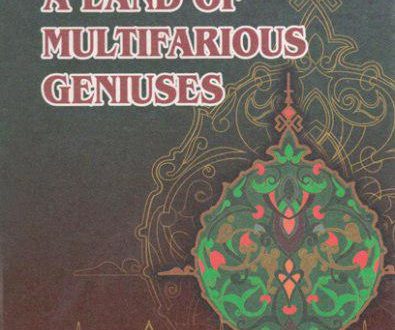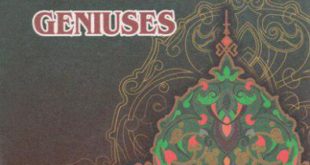Imam Abu Bakr Muhammad ibn Ahmad ash-Shashi commented on the peculiarities of al-Faqih ash-Shafi’is book “Al-Umdatu fi furu’i ash-Shaf’iya” (Foundations of Shafi’iya Furus). This book, which describes the principles of religion in a short and laconic manner, was written in accord with the orders of Caliph al-Mustaz-hir’s son. This book attracted the attention of many scholars of his time and was commented on by such estimated scholars as Alauddin Ali ibn Muhammad al-Baghdadi (died in 741), Tajiddin Umar ibn Ali al-Fakihani al-Maliki (died in 731), Umar ibn Ali (died in 804) who was known as Ibn al-Mulaqqin, Sheikh Taqiyuddin Muhammad ibn Ali (died in 702) who was known as Ibn Daqiq al-Iyd, Shamsuddin Muhammad ibn Abduddaim al-Barmavi (died in 831) and others.
Another precious book written by Abu Bakr Muhammad ibn Ahmad Shashi was titled as “Ash-Shafi’i” (A Curer) which was devoted to the study of law. It was written as a commentary on the book “Al-Mukhtasar” by an Arabic historian Abu Ibrahim Ismail ibn Yahya al-Muzani (791-878). As the sources confirm, this commentary was written for five years and it consisted of twenty volumes. However, another author Ibn Khallikan considers that Abu Bakr Shashi’s this book was a commentary written on the other book: “The author of “Ash-Shamil fi furu’i ash-Shafi’iya” Abu Nasr Abdussalam ibn Muhammad ash-Shafi’i is known as Ibn as-Sabbag. This book is estimated as the best and most correct book that has ever been written on the principles of the Shafi’i order. It contains commentaries and explanations. Imam Abu Bakr Muhammad ibn Ahmad al-Baghdadi ash-Shashi (died in 507) also titled his commentary consisting of twenty volumes as “Ash-Shafi’i””.
Most sources state that Abu Bakr Shashi’s book “Ash-Shafi’i” is a commentary written on one of the five books in the Shafi’iya order titled as “Mukhtasar al-Muzani fi furu’i ash-Shafi’iya”.
As Imam an-Navavi stresses in his book “At-Tahzib”, Sheikh Imam Ismail ibn Yahya al-Muzani ash-Shafi’i was the first author to write a book in the Shafi’iya order. As stated by Ibn Surayj, “Al-Muzani Mukhtasar” came into the world as a virgin and the others followed him and created their books following his style. Most acknowledged scholars wrote commentaries on this book. For instance, Imam Abu Bakr Muhammad ibn Ahmad ash-Shashi wrote his commentary under the title of “Ash-Shafi’i”. Besides that, he also wrote other books under the titles of “The main pier of the Shafi’iya order” and “A problem dealing with divorce”.
Thus, Abu Bakr Muhammad ibn Ahmad Shashi lived in the very centre of science and Islamic education of the Middle Ages in Baghdad alongside with such estimated scholars as Abu Is’haq Shirazi, Abulqasim Qushayri, Hariri, Abu Is’haq Vahidi, Abulmahasin Ruyani, Khatib Tabrizi, Khatib Baghdadi, Qazi Bayzavi and others. Our countryman known as Mustazhiri was also a contemporary of such famous scientist and experts in most of the Islamic sciences as Abulabbas Ahmad, Abulmuzaffar Sam’ani, Nasr Muqaddasi, Ruyani, Khatib Tabrizi, Imam Ghazzali, etc.
Such well-known and estimated scholars of that time as Abu Is’haq Shirazi, Abu Nasr Saba’, Abulqasim Dabusi, Imam Ghazzali, Fakhr al-Islam Shashi (Abu Bakr Muhammad ibn Ahmad), Suhravardi, Kamaliddin Anbari and others delivered lectures at Nizamiya Madrasah in Baghdad. Mustazhiri taught the Arabic language, lexicology, logic, law, literature, mathematics, phonetics and tafsir at Nizamiya.
Shashi was an acknowledged expert in most of the branches of science such as Arabic literature; especially, he was good at poetry, Qur’an, Hadith, linguistics and grammar. Therefore, his book devoted to syntax was mentioned in most highly appreciated books of his conte mporaries.
Abu Bakr Muhammad ibn Ahmad Shashi died in 507/1114 on an early Saturday morning on the 15th day of the month Shawal. He was buried in the mausoleum of “Bab-al-Abraz” next to the tomb of his master Abu Is’haq Shirazi. Fakhr al-Islam Shashi left two sons, Ahmad and Abdullah who reached the status of imam of their time following their father.
Tajiddin Subki wrote the following about his sons: “Ahmad ibn Muhammad ibn Ahmad ibn al-Husain ibn Umar Abulmuzaffar is the son of Fakhr al-Islam Abu Bakr Shashi and he studied law trom his father. He also listened Hadiths from Abdullah ibn Talha and, in his turn, ibn Talha was cited by Abu Bakr ibn Kamil and Hafiz ibn Asakir. Abu Bakr Shashi’s son Ahmad died on the 10th day of the month Rajab in 529 in Baghdad.
Abu Bakr Muhammad ibn Ahmad Shashi’s second son Abdullah ibn Muhammad ibn Ahmad was born in 481/1088. He studied law from his father. He was an expert in the problems of orders, was active in debates of the scholars, and delivered lectures on different questions of Islam. He was a poet and listened to the Hadiths delivered by Abdullah ibn Muhammad ibn Ahmad Husain ibn Ahmad ibn Talha an-Ni’ali and others”.
A well-known lawyer of that time Abu Hafs Umar ibn Ahmad al-Husain ash-Shashi was a brother of the great Imam, Fakhr al-Islam Abu Bakr Muhammad ibn Ahmad Shashi. He studied law from Sheikh Abu Is’haq Shirazi and listened to the Hadiths delivered by Abulhusain ibn al-Muhtadi and others. The scholar died in 550/1155.
It is without doubt that Abu Bakr Muhammad ibn Ahmad Shashi made a substantial contribution to the development of the Islamic law with his scientific and educational heritage. His activity and career in Baghdad as Head Master of Nizamiya Madrasah is a real proof that Abu Bakr Muhammad ibn Ahmad Shashi was really a talented scholar and had great scientific potential. It is a great pity that his books and other scientific works are not preserved in the libraries of our country.
It is our duty to organize scientific expeditions to other countries to find out and collect the precious manuscripts of our great ancestors, and investigate them for the sake of our science and education. The materials and information about them would serve as necessary sources to study the history of science, education and culture of Tashkent in the Middle Ages.
 Imom Buxoriy xalqaro ilmiy-tadqiqot markazi bukhari.uz
Imom Buxoriy xalqaro ilmiy-tadqiqot markazi bukhari.uz











